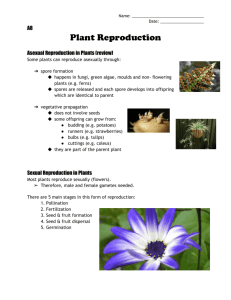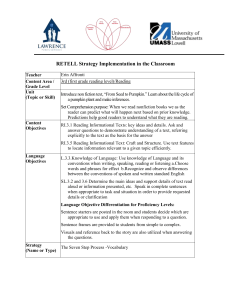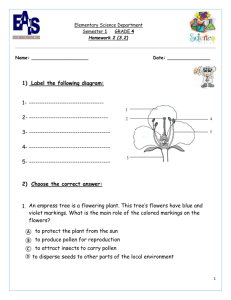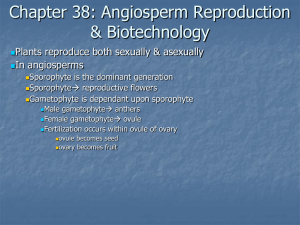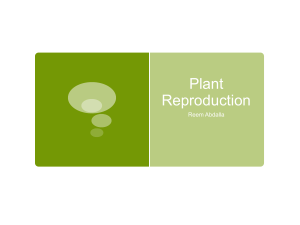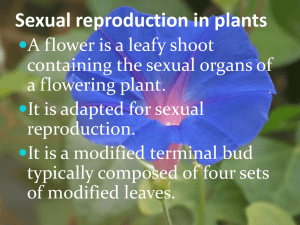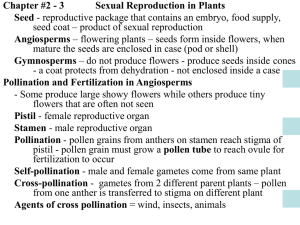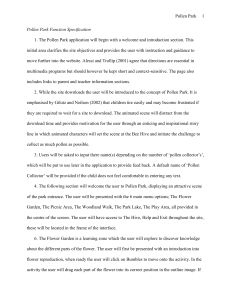Plant Reproduction Workshop - UCI
advertisement
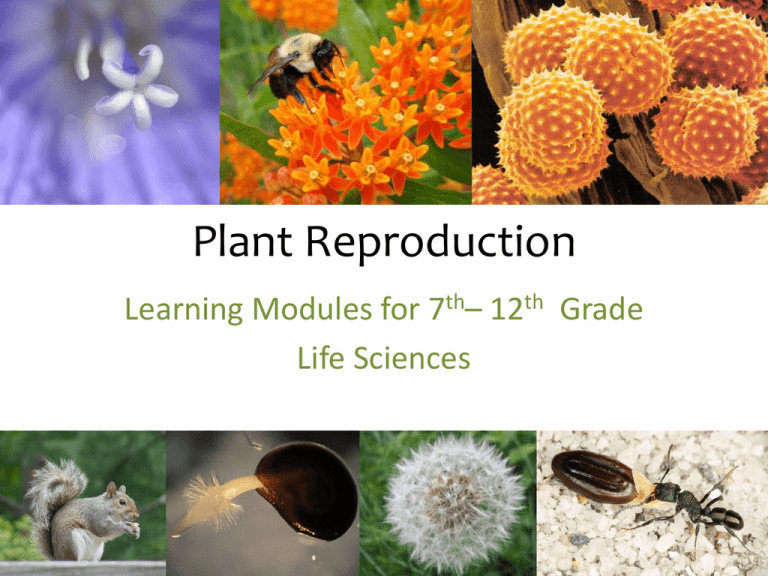
Plant Reproduction Learning Modules for 7th– 12th Grade Life Sciences Today’s Workshop • Pollen Crime Lab + Seed Dispersal Labs created to teach students about plant reproduction and life cycle • Incorporate two major stages of plant reproduction (fertilization & seed production) • Fun, hands-on activities that incorporate real-life scenarios (forensics & competition) Pollen Crime Scene Activity Why Pollen? o o o o o Reinforces concepts of plant reproduction Easily stained and visualized using microscopes Unique and diverse morphology Real-world application that appeals to students Incorporates investigation and experimentation techniques Pre-Lab Presentation o Structure of a flower and reproductive organs o Structure of pollen grain o How do scientists use pollen to answer questions about organisms and their environment o Using pollen in crime and accident scenes o Video: time lapse pollen grain germination Pollen Crime Scene Activity • Examine the pollen structure from four plant sources and determine the guilty suspect of an assault. Each lab group: Pre-made slide: Victim Suspect 1 Flowers found at each suspect’s home Suspect 2 Suspect 3 Worksheet Learning Objectives • Use experimental and investigatory techniques (create hypotheses, collect data, draw conclusions) • Improve microscopy skills • Identify and distinguish unique biological species • Recognize real-life applications of plant biology California Learning Standards 7th Grade Life Sciences: • Structure and Function in Living Systems (5 a, f) • Investigation and Experimentation (7 a, c, d) High School Biology: • Genetics (2b) • Ecology (6a) • Evolution (7d) Assessment • Worksheets, lab write-ups • Exam questions, quizzes • Building upon learned knowledge on subsequent activities Seed Dispersal Activities Objectives: • Educate students about an important stage of plant reproduction • Teach students how to recognize the different mechanisms plants use to disperse their seeds • Incorporate material pertaining to plant competition and inbreeding depression Name That Diaspore!! (Seed Dispersal Lab I) Students will be presented with a diverse array of plant diaspores and will be asked to determine the mechanism by which they are likely to disperse. *Diaspore = seed + any additional tissues that assist in dispersal Worksheet Build Your Own Diaspore! (Seed Dispersal Lab II) • Students will be given craft materials (construction paper, glue, paper clips, etc.) to construct their own plant diaspores that will ride the wind. • Each group of students will compete their seeds to determine which model is m the most efficient wind-disperser. Worksheet High School Modifications Pollen Activity: • Include more details about plant reproduction: double fertilization, autogamy vs. allogamy, mating systems, meiosis & mitosis, gametophytes & sporophytes Seed Dispersal Activities: • Inbreeding depression, plant competition and other ecological mechanisms, more details in plant physiology Questions?
